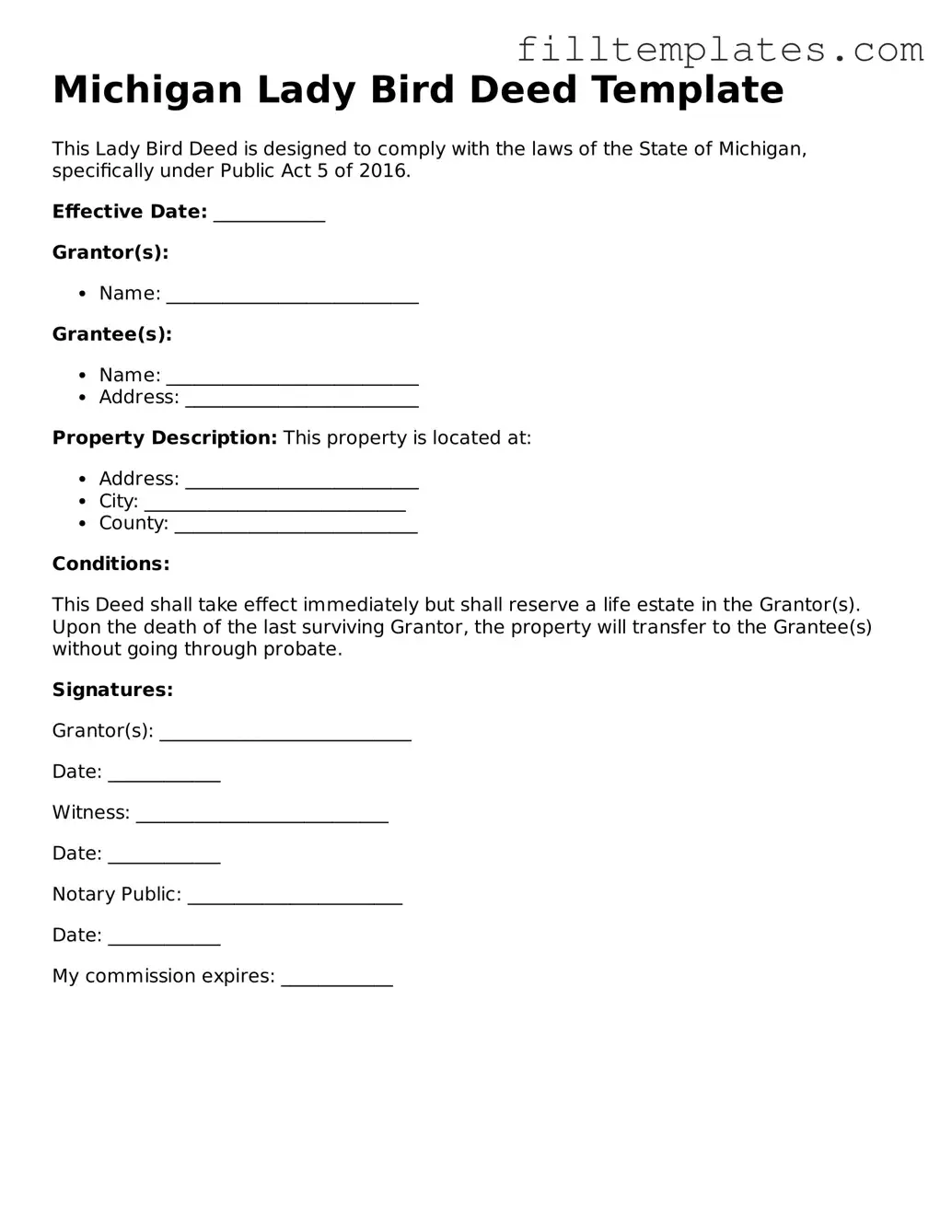Official Lady Bird Deed Template for the State of Michigan
The Michigan Lady Bird Deed form is a legal document that allows property owners to transfer their real estate to beneficiaries while retaining the right to live in and control the property during their lifetime. This unique type of deed provides flexibility and can help avoid probate, making it an appealing option for many individuals. Understanding the intricacies of the Lady Bird Deed can empower property owners to make informed decisions about their estate planning.
Open Lady Bird Deed Editor
